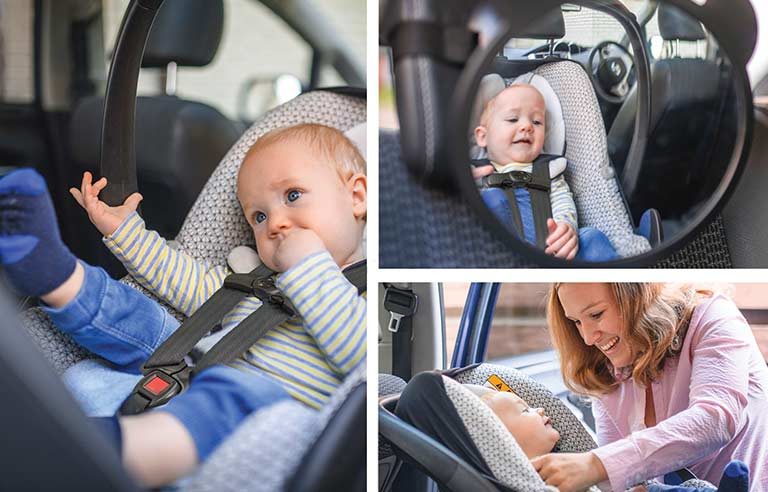Kids and hot cars
‘Not just a summertime issue’

You take a quick phone call. You run into the store for just a minute. A detour changes your route on the morning commute.
These common scenarios can distract you – and divert you from your typical daily routines. When your child is in the car, these distractions can have tragic consequences.
According to the National Safety Council, in 2018, 53 children died in hot cars under circumstances much like the ones mentioned above.
Although these incidents are more common in the summer months, they’re not limited to July and August. From 1998 to 2018, hot car deaths have been recorded in 47 states and every month, according to NoHeatStroke.org.
“On average, the first death of each calendar year occurs during the month of March,” said Amy Artuso, senior program manager for grants, transportation and advocacy at the NSC. “It’s absolutely not just a summertime issue.”
How does it happen?
The inside of your vehicle can heat up quickly after the engine is turned off because of the sun’s rays. The more direct the rays, the faster the temperature rises.
Artuso says the temperature can increase up to 19° F in the first 10 minutes after parking your car and turning off the engine.
“The windows are transparent and the sun’s rays can get into the vehicle,” said Robert Ritter, director of impaired driving and occupant protection at the National Highway Traffic Safety Administration. Especially if your car has a dark dashboard or interior, “these will absorb the sun’s radiation, heat up more and then radiate that heat into the entire vehicle.”
This means that on an 80-degree day, the inside of your car can heat up to nearly 100° F in just 10 minutes. Couple that with the fact that, according to the American Academy of Pediatrics, a child’s body heats up three to five times faster than an adult’s body.
“When their core body temperate reaches 104° F, that’s when things start to get bad,” Artuso said. “When their temperature reaches 107° F, that’s when the situation can become fatal.”
Even with your car windows cracked open, the heat can continue to rise.
Post a comment to this article
Safety+Health welcomes comments that promote respectful dialogue. Please stay on topic. Comments that contain personal attacks, profanity or abusive language – or those aggressively promoting products or services – will be removed. We reserve the right to determine which comments violate our comment policy. (Anonymous comments are welcome; merely skip the “name” field in the comment box. An email address is required but will not be included with your comment.)
